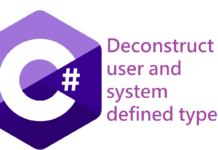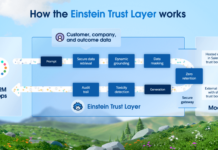It is no longer news to anyone that change is a constant. And we also all know that the speed with which we face and adapt is a key factor for success (and survival).
This year of 2020 has proved to us that the way of working does not escape this rule. If we were all used to a fixed job a few months ago, Covid-19 quickly taught us how to move that job home. More recently, with the return to the very conditioned office, we (re)interpreted a new concept — that of hybrid work.
In fact, it no longer matters where we are actually working. We can now be at the office, tomorrow at home, then somewhere else. With the increasing irrelevance of physical boundaries, virtual ones become more important. Today, nobody does without the technological tools that allow us to find colleagues, communicate with the team, develop work, collaborate around projects or participate in the most diverse internal initiatives.
These solutions are often made available without a clear purpose, are often dispersed across the organization, and in some cases inaccessible to most potential users. The poor use results not only from the unpreparedness of the final beneficiaries themselves, but above all from the inadequacy to the specific context of each organization, where internal structure, dynamics and culture are not taken into account.
If in some organizations the greatest difficulties may be related to difficult internal communication or productivity ratios, in other cases the priorities may be the development of a collaborative spirit within and between teams, the promotion of creativity or innovation, among many others.
Topics such as accountability and decentralization, such as proximity and participation, and the recognition and appreciation of people can (and should) be addressed in this very important window of opportunity to improve the organizational environment, that is, incorporated in this rapid adaptation to the ‘new normal’.
It is therefore very important to face the transition in a holistic way, defining from the outset the main daily challenges faced by different types of employees, whether or not they already have a digital job.
In fact, front-line workers, who normally do not have an exclusive computer (such as in person attendance, cleaning and maintenance services, factory production, transports and logistics, etc.) should also be considered in this effort to train the entire organization, whether they are internal employees, external consultants, freelancers or other partners.
It is therefore crucial that the digital transition strategy of the way of working is inclusive, reaching all employees, regardless of their function, profile or location. The modern work solution to be adopted should therefore not only be simple to use, but also allow mobile access through the devices of the employees themselves, without compromising the necessary high security standards (considering that we are in an integrated environment of the information systems of the entire organization).
The effort required for this training is fundamentally for managing change, since the cost of technology has been falling significantly. The business model itself has evolved with the needs of the market and, today, a ready-to-use platform for modern and digital work can be hired as a service, the price of which is indexed to the actual use (eg number of employees), with no initial investments or any other hidden prices (infrastructure, corrective, preventive or evolutionary maintenance).
In any case, the biggest cost will always be to remain anchored to old-fashioned processes and not take advantage of this golden opportunity to digitize the workspace. After placing the topic on the organization’s internal agenda and defining the governance of the project, the team of ‘ambassadors’ should be as transversal as possible, incorporating elements of internal communication, human resources and IT.
The old intranet will quickly give way to a truly productive, collaborative and creative virtual-social space, representative of the organization’s culture. The benefits will soon be visible.
Originally published at Jornal Económico on November 30, 2020.


![[FIX] BizTalk Server 2010, 2013, 2013 R2 & 2016 errors “Class not registered (WinMgmt)” or “Access denied”](https://blogit.create.pt/wp-content/uploads/2018/07/access-black-and-white-blur-270514-218x150.jpg)


















